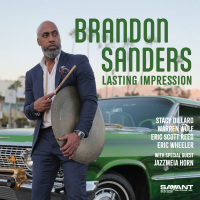Home » History of Jazz Timeline: 1927
History of Jazz Timeline: 1927
Americans will buy more than 100 million phonograph records this year.
It seems as if the music of Oliver and Morton will capture the world but.
Armstrong makes the greatest of the hot fives and sevens. He is now setting whole phrases ahead or behind the beat, not just pulling single notes. This will set the stage for Swing. Armstrong is now a star and because of him, New Orleans style ensemble playing is disappearing and is being replaced by Chicago and New York style solos. In short Jazz is becoming a soloist art primarily because of Armstrong. A few songs of significance include "Struttin' with Some Barbecue", "Big Butter and Egg Man" and "Hotter than That". In May, Warren "Baby" Dodds on drums and Pete Briggs on tuba are added to hot fives to make hot sevens.
Joe Oliver's band is offered a job as house band at the new Cotton Club in Harlem. Joe turns down the job or loses it because he wants too much money. It was a fatal mistake for Joe.
Barney Bigard joins Ellington band.
Irving Mills gets Ellington a recording contract with Columbia. Resulting sides can be found on the set The Okeh Ellington on the Columbia label. Notable selections include "Black and Tan Fantasy" and "East St. Louis Toodle-oo". People like Ellington's music at this time primarily for Bubber Miley's freaky trumpet style.
Ellington records "Black and Tan Fantasy" for Columbia on October 26 in New York City.
Ellington band starts at the Cotton Club in Harlem on December 4 after the job is turned down by Joe Oliver. The Cotton Club broadcasts Ellington's performances from coast to coast. Ellington uses Adelaide Hall's raspy voice as an instrument (not scat). The Cotton Club job will last until 1932.
Jelly Roll Morton and the Red Hot Peppers issue their classic sides.
Goldkette band featuring Bix Beiderbecke and Frankie Trumbauer (Bix and Tram) will collapse financially and then Bix and Tram will join the Paul Whiteman Band.
Bix, who is now at his peak, is also working with various pickup groups and producing lasting music such as "Singin' the Blues" and "I'm Comin' Virginia" with these groups. See the Columbia collection Singin' the Blues. Even black players are copying Bix at this time.
Bix is now spending time playing piano and composing for it. Writes "In a Mist", "Flashes", "Candlelight" and "In the Dark".
Bix Beiderbecke records "In a Mist" on September 9.
Art Tatum at seventeen is hired as staff pianist for station WSPD in Toledo, Ohio. His talent is so evident that the show goes national. He begins to become an influence on the future Boppers via Coleman Hawkins.
Coleman Hawkins drops his "slap tongue" style of playing tenor saxophone and begins improvising by playing the notes of the chords of a song. He'd heard a teenaged Art Tatum do this and was quite impressed. Up to this time all improvisation had been based on a song's melody. At first, this new style seemed somewhat incoherent but it will eventually lead to modern forms of Jazz.
Bootlegger Joe Helbock (a friend of Jimmy Dorsey) opens a speakeasy called The Onyx on 52nd street. It becomes a musicians' hangout featuring such attractions as Art Tatum.
Lester Young is now eighteen and is a competent musician. His main influence is the white saxophonist Frankie Trumbauer. Young likes the way Tram introduces the melody and then plays around it.
James P. Johnson is now playing Jazz with his release of "Snowy Morning Blues". The stride style at this point is analogous to the former rag players swinging the rags like Jelly Roll did about a decade earlier.
John Birks "Dizzy" Gillespie is sent on a scholarship to Laurinburg Institute. He studies trumpet, trombone and theory.
Benny Goodman makes first record using his own name.
The first talking movie is released. It is The Jazz Singer starring Al Jolson in black face. It opens on October 6.
Billie Holiday's mother brings her to New York.
Chick Webb's band is playing the Savoy Ballroom.
Mahalia Jackson opens a cosmetics shop in Chicago. She turns down an offer from the now famous Earl Hines.
Meade Lux Lewis records "Honky Tonk Train Blues".
Trumpeter Wild Bill Davison is playing in Chicago.
Saxophonist and composer Gigi Gryce is born in Hartford, Connecticut.
Bing Crosby joins the Paul Whiteman band.
October 1927 - Hoagy Carmichael records two versions of his
composition "Star Dust," one with lyrics (which get edited a year
later), one instrumental - Gennett releases the instrumental version
which is a poor seller, when Gennett is approached to release the
vocal version, Fred Wiggins head of Gennett writes on the master:
"Reject. Already on Gennett. Poor Seller."
"Star Dust" would soon become one of the most recorded songs in pop
and jazz.
Keyword Search
Disclaimer: Though we have checked our facts, this timeline may contain erroneous information. If you discover errors or omissions, please bring them to our attention.









